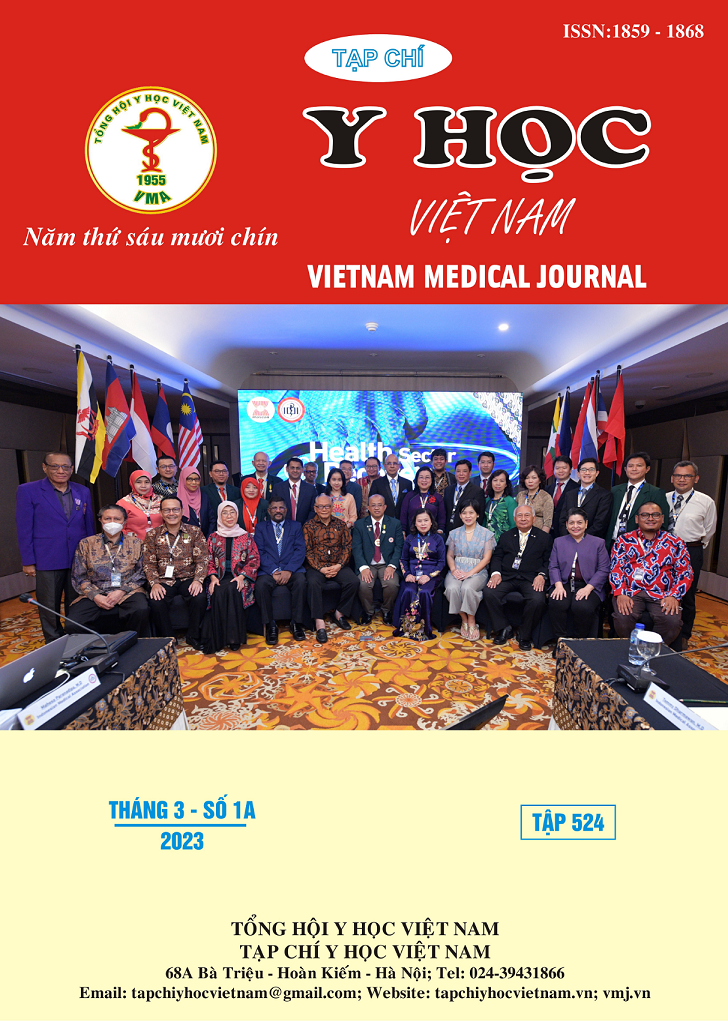ASSESSMENT OF SURGICAL RESULTS C1-C2 INSTABILITY AT BACH MAI HOSPITAL
Main Article Content
Abstract
Objective: To evaluate the treatment results of patients with C1-C2 instability who underwent surgery at Bach Mai hospital. Subjects and methods: Retrospective study of 34 patients diagnosed with C1-C2 instability and operated from October 2017 to October 2019 at Bach Mai Hospital. Results: The average age of the study group was 47,77, and the most common surgical method was the Harms technique with 25 patients, accounting for 73,52%. There are 23,53% of patients having to have an arcectomy after C1 decompression; 100% of patients received bone grafting with homogenous bone graft, and the bone healing rate was 94,12%. There were 6 complications (17.65%) recorded during and after surgery including 1 case of C2 root damage (2.9%), 2 cases of screwing into the spinal canal (5.9%), 3 cases of tearing of the venous plexus (8.8%), 1 case of wound infection, 1 case of pneumonia. Good and very good treatment results reached 97.06%, with 1 patient (2.94%) achieving average results. Conclusion: Surgical treatment of unstable C1-C2 lesions initially gave good results; Bone grafting with artificial bone gives a high healing rate, comparable to other methods.
Article Details
Keywords
C1-C2 instability, C1-C2 fixation surgery, homogenous bone graft
References
2. H. Vernon và S. Mior (1991), "The Neck Disability Index: a study of reliability and validity", J Manipulative Physiol Ther, 14(7), tr. 409-15.
3. S. D. Gertzbein và S. E. Robbins (1990), "Accuracy of pedicular screw placement in vivo", Spine (Phila Pa 1976), 15(1), tr. 11-4.
4. Robert E Elliott, Omar Tanweer, Akwasi Boah và các cộng sự. (2014), "Outcome comparison of atlantoaxial fusion with transarticular screws and screw-rod constructs: meta-analysis and review of literature", Clinical Spine Surgery, 27(1), tr. 11-28.
5. Prabhu V. C., France J. C., Voelker J. L. và các cộng sự. (2001), "Vertebral artery pseudoaneurysm complicating posterior C1-2 transarticular screw fixation: case report", Surg Neurol, 55(1), tr. 29-33; discussion 33-4.
6. Coric D., Branch C. L., Wilson J. A. và các cộng sự. (1996), "Arteriovenous fistula as a complication of C1-2 transarticular screw fixation. Case report and review of the literature", J Neurosurg, 85(2), tr. 340-3.
7. Finn M.A. và Apfelbaum R.I. (2010), "Atlantoaxial transarticular screw fixation: update on technique and outcomes in 269 patients", Neurosurgery, 66(3 Suppl), tr. 184-92.
8. Rozalia Dimitriou, George I Mataliotakis, Antonios G Angoules và các cộng sự. (2011), "Complications following autologous bone graft harvesting from the iliac crest and using the RIA: a systematic review", Injury, 42, tr. S3-S15.
9. Robert E Elliott, Amr Morsi, Anthony Frempong-Boadu và các cộng sự. (2012), "Is allograft sufficient for posterior atlantoaxial instrumented fusions with screw and rod constructs? A structured review of literature", World neurosurgery, 78(3), tr. 326-338.
10. Corbett D Winegar, James P Lawrence, Brian C Friel và các cộng sự. (2010), "A systematic review of occipital cervical fusion: techniques and outcomes: a review", Journal of Neurosurgery: Spine, 13(1), tr. 5-16.


